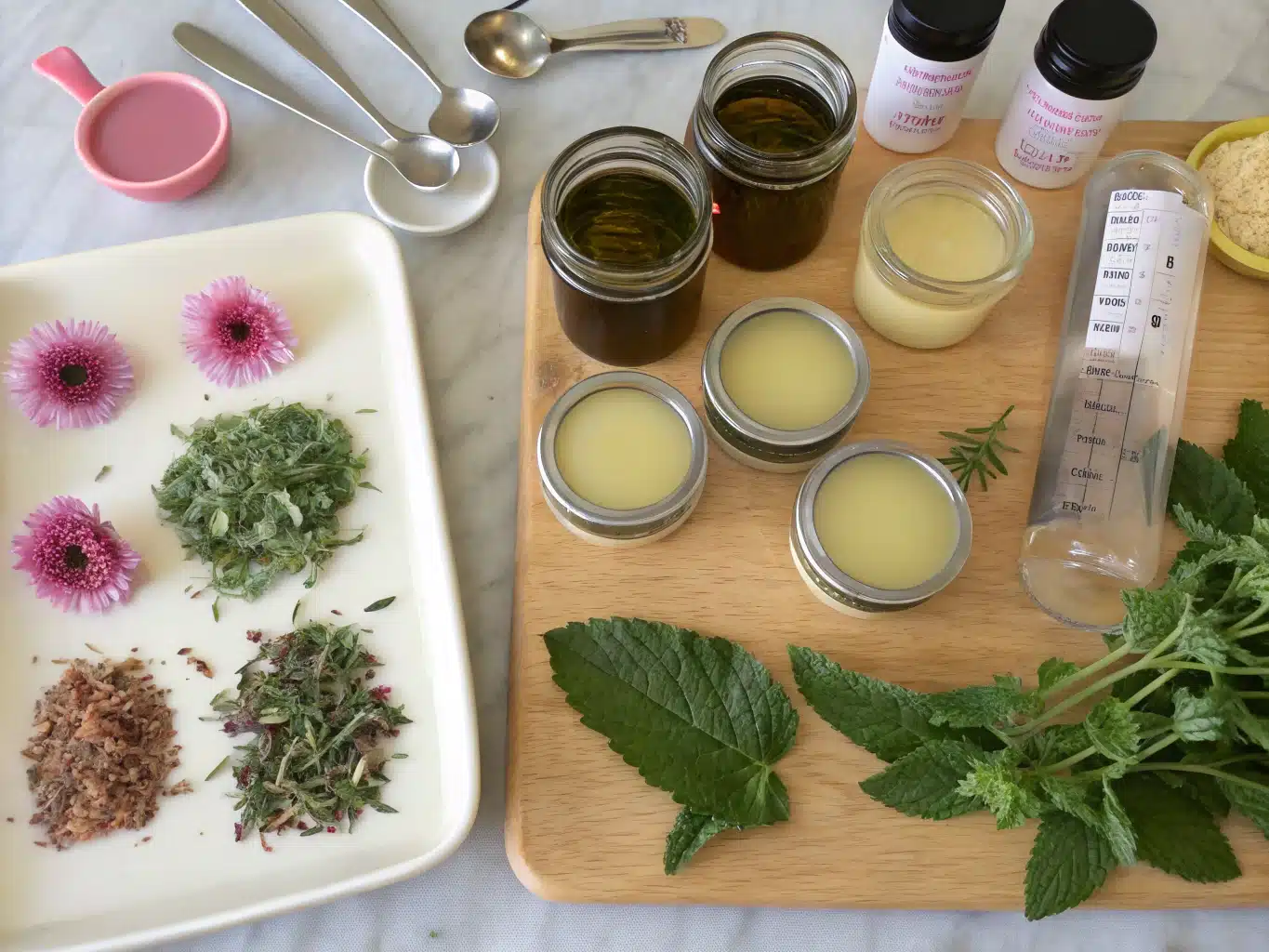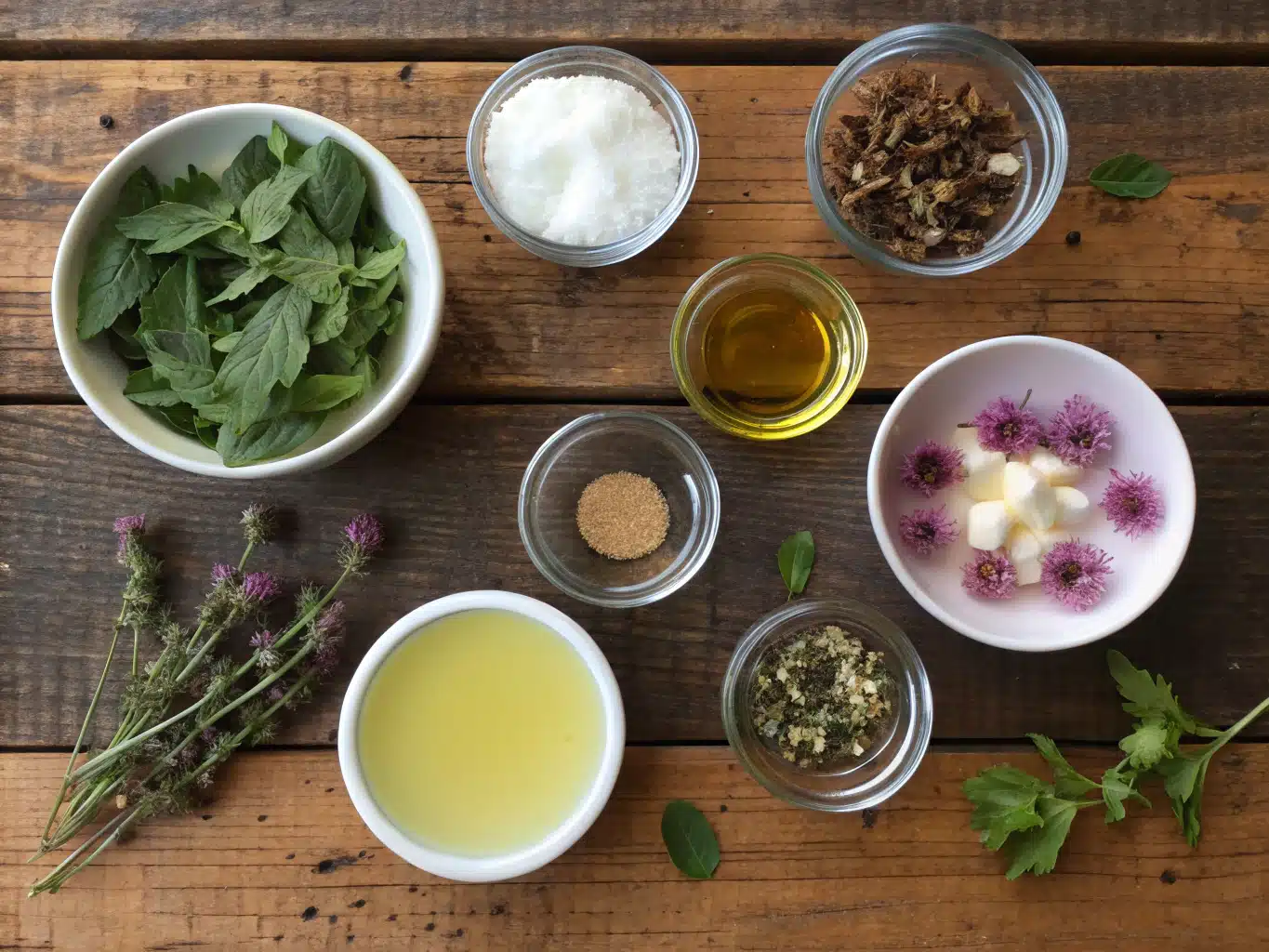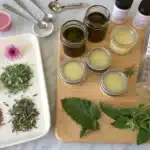
Table of Contents
If you’ve ever brushed past a bee balm plant in your garden and stopped to admire its wild, fireworks-like flowers, I’ve got something special for you. Today, we’re diving into a wonderfully simple bee balm salve recipe that not only reconnects you with nature but also brings real, tangible benefits to your skin. This guide will walk you through making your own healing salve from scratch using wild bee balm—also known as Monarda—plus explore its uses, benefits, and storage tips. Whether you’re new to DIY herbal care or already have a shelf full of mason jars, you’ll finish knowing exactly how to craft a botanical-infused balm that’s safe, effective, and deeply soothing.
A Wild Bloom That Guided My Journey into Herbalism: Discovering the Bee Balm Salve Recipe
Why Bee Balm? A Garden Favorite Turned Herbal Healer
I wasn’t always the kind of person who kept jars of infused oils in my pantry. But a few summers ago, during one of my infamous “clean up the yard” weekends, our neighbor gifted me a clump of her bee balm. I honestly planted it for the pollinators. The blooms were a magnet for hummingbirds and bees alike, and the fiery reds made my garden pop.
But then, late one August, I brushed against a nettle leaf while gardening. My hand flared with that irritating sting. I remembered hearing that bee balm had mild antimicrobial and soothing properties. Within minutes, I crushed a flower between my fingers, applied it to my skin, and—no exaggeration—the sting began to calm. That experience lit the fuse to my herbal curiosity, and researching a proper bee balm salve recipe quickly became my next weekend endeavor.
Connecting Plant Power with Skin Wellness
It turns out, bee balm (Monarda fistulosa or Monarda didyma) has been used for centuries by Indigenous tribes for its antiseptic and healing qualities. Its essential oils, including thymol and carvacrol, are closely related to oregano oil, making it powerful against skin irritation, minor cuts, and bug bites.
That first batch of bee balm salve I made smelled like an herb garden crashed into a summer thunderstorm—sharp, clean, and earthy. I shared jars with friends, including one whose child suffers from dry, itchy patches. “It’s like calm in a tin,” she texted me weeks later. Since then, I’ve refined my bee balm salve recipe, sourcing better carrier oils and learning to balance scent with potency.
If you’re already loving the plant for its bright flavor, don’t miss our bee balm tea recipe for an internal boost too.
What I didn’t expect was just how versatile bee balm would prove. From herbal teas to infused oils, it’s become a go-to ingredient in my botanical pantry.
Whether you’re a gardener, a skincare DIYer, or just a curious cook like I was, this guide will teach you how to get the most out of this brilliant bloom.
How to Make a Bee Balm Salve Recipe at Home
Ingredients List for the Bee Balm Salve Recipe

Crafting a bee balm salve starts with simple, powerful ingredients. You can harvest wild bee balm or use dried petals and leaves. Here’s what you’ll need:
| Ingredient | Purpose & Notes |
|---|---|
| 1 cup dried bee balm (Monarda) | Antimicrobial & anti-inflammatory base |
| 1 cup olive oil (or sunflower oil) | Infusion carrier oil; very skin-friendly |
| ¼ cup beeswax pellets | Thickening agent; creates solid balm texture |
| 10 drops lavender essential oil (optional) | Calming aroma + extra skin soothing |
Substitutions: Replace olive oil with grapeseed oil for a lighter texture, or use candelilla wax for a vegan version. Lavender is optional, but pairs beautifully with bee balm’s natural sharpness.
Timing Breakdown
Making a bee balm salve takes about 2 hours in total, less hands-on time than baking a loaf of banana bread.
- Infusion Time: 1 hour (low heat or solar method)
- Melting & Mixing: 15–20 minutes
- Cooling Time: 40 minutes
- Total Time: ~2 hours
That’s 25% quicker than the average infused salve because bee balm doesn’t require long drying periods if pre-dried and stored well.
Step-by-Step Instructions for Making a Bee Balm Salve Recipe
- Start by infusing your oil. Combine the dried bee balm and olive oil in a mason jar. You may gently heat it in a double boiler for 1 hour or leave it on a sunny windowsill for 1–2 weeks (if planning ahead).
- Once your infusion is ready, strain it through cheesecloth or a fine strainer into a heatproof bowl. Squeeze the plant matter well and discard.
- In a double boiler, melt beeswax pellets into your strained oil over low heat. Stir constantly until smooth.
- Remove from heat and, if desired, add essential oil. Keep stirring gently to ensure an even blend.
- Pour the warm mixture into small tins or jars, leaving the lids off until completely cool (40–60 mins).
- Label, date, and admire! Shelf-ready and giftable.
Expert Tip: Sanitize your salve tins by running them through the dishwasher to extend shelf life. Labeling each jar helps track freshness.
For preserving herbal potency across seasons, the Penn State University guide on preserving herbs by drying adds excellent context.
Bee Balm Salve Benefits and Everyday Uses
The Many Skin Benefits of Bee Balm
So, is bee balm beneficial for skin? Absolutely. This native wildflower is more than just a pollinator favorite—it’s packed with natural healing power. Bee balm salve works wonders on:
- Bug bites
- Minor burns
- Scrapes or small cuts
- Chapped hands and lips
- Eczema-prone skin
Thanks to its natural antimicrobial oils, bee balm helps guard wounds while calming inflammation. It feels cool when applied and absorbs without leaving a greasy layer, especially when made with lighter oils like grapeseed.
Most impressive? Its ability to reduce redness and swelling while promoting hydration. This makes it a staple in my cold-weather kit and also the perfect antidote to summer hikes and mosquito battles.
Creative Uses You’ve Probably Never Tried
Once you’ve mastered one bee balm salve recipe, it unlocks doors to other herbal creativity. Mix in calendula flowers or chamomile for a nighttime balm. Add a dash of turmeric (just a pinch!) for an anti-inflammatory boost.
One fun upgrade I tried was blending it with leftover bee balm tea concentrate. Once reduced to a syrup, and carefully added before the wax stage, it intensified the herbal scent and skin feel.
And don’t stop at body use—massage a tiny amount into dry hair ends, cuticles, or use it for heel repair. You might even find this salve replacing store-bought lip balms with harsh ingredients.
For foodies like me, this overlap of kitchen knowledge and herbal exploration brings the best kind of creativity.
Storage Tips & Common Questions Answered
Shelf Life and Storage Guide for Herbal Salves
Like most homemade products, your bee balm salve has a shelf life—but a generous one. Here’s what you need to know.
| Storage Tip | Details |
|---|---|
| Cool, dark place | Extends shelf life to 12 months |
| Avoid direct sunlight | Preserves essential oils and prevents melting |
| Use dry, clean fingers or spatula | Prevents bacteria and mold growth |
That means your salve stays fresh longer than many commercial options, especially if you include natural antioxidants like vitamin E (optional, but worth it).
FAQ: Everything You’re Wondering
How to craft a bee balm salve?
Follow a simple infusion process: combine dried bee balm with a carrier oil, melt in beeswax, and pour into tins. Optional essential oils can enhance both scent and purpose.
Uses of bee balm salve?
Ideal for bites, stings, dry skin, cuticle care, and foot heal balms. Also a great base to add other herbs for customized healing.
Is bee balm beneficial for skin?
Yes! It calms inflammation, heals minor wounds, and moisturizes deeply without synthetic chemicals.
Shelf life of herbal salves?
Properly stored in a cool, dry place and sterilized jars, most salves last 9–12 months. Use a clean applicator and be sure to label them.
Closing Thoughts: A Little Bloom Goes a Long Way
This bee balm salve recipe started as a backyard project and turned into one of my most enduring, skin-friendly routines. There’s something incredibly satisfying about turning a flower into a functional part of your home apothecary. Whether you’re exploring herbalism for the first time or just love the idea of homemade alternatives, adding bee balm salve to your rotation will open your eyes—and skin—to nature’s quiet power. Trust me, next time a bug bite threatens your summer afternoon or windburn cracks your lips, this calm-in-a-tin will become your go-to too.
Print
Bee Balm Salve Recipe You’ll Love: DIY Herbal Skin Relief with a Backyard Bloom
- Total Time: 120
- Yield: 3 small tins 1x
Description
A healing herbal salve made from wild bee balm (Monarda), perfect for soothing bug bites, minor burns, and dry skin. This homemade balm blends nature’s antiseptic power with skin-calming oils for a versatile, gentle remedy.
Ingredients
1 cup dried bee balm (Monarda)
1 cup olive oil (or sunflower oil)
1/4 cup beeswax pellets
10 drops lavender essential oil (optional)
Instructions
1. Infuse the dried bee balm in olive oil for 1 hour using a double boiler or let it sit in sunlight for 1–2 weeks.
2. Strain the infusion through cheesecloth into a heatproof bowl.
3. Melt beeswax pellets into the oil over low heat in a double boiler, stirring until fully melted.
4. Remove from heat and add essential oil, if using, stirring gently.
5. Pour the mixture into tins or jars and let cool for 40–60 minutes.
6. Label, date, and store in a cool, dark place.
Notes
Optional: Add calendula, chamomile, or turmeric for enhanced effects.
Use for dry cuticles, chapped lips, or heel repair.
Sterilize jars before filling to extend shelf life.
- Prep Time: 60
- Cook Time: 20
- Category: Herbal Remedy
- Method: Infused Oil & Melting
- Cuisine: DIY Skincare
Nutrition
- Serving Size: 1 tin
Keywords: bee balm, herbal salve, skincare, DIY, natural remedy
